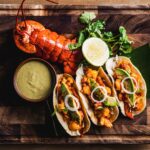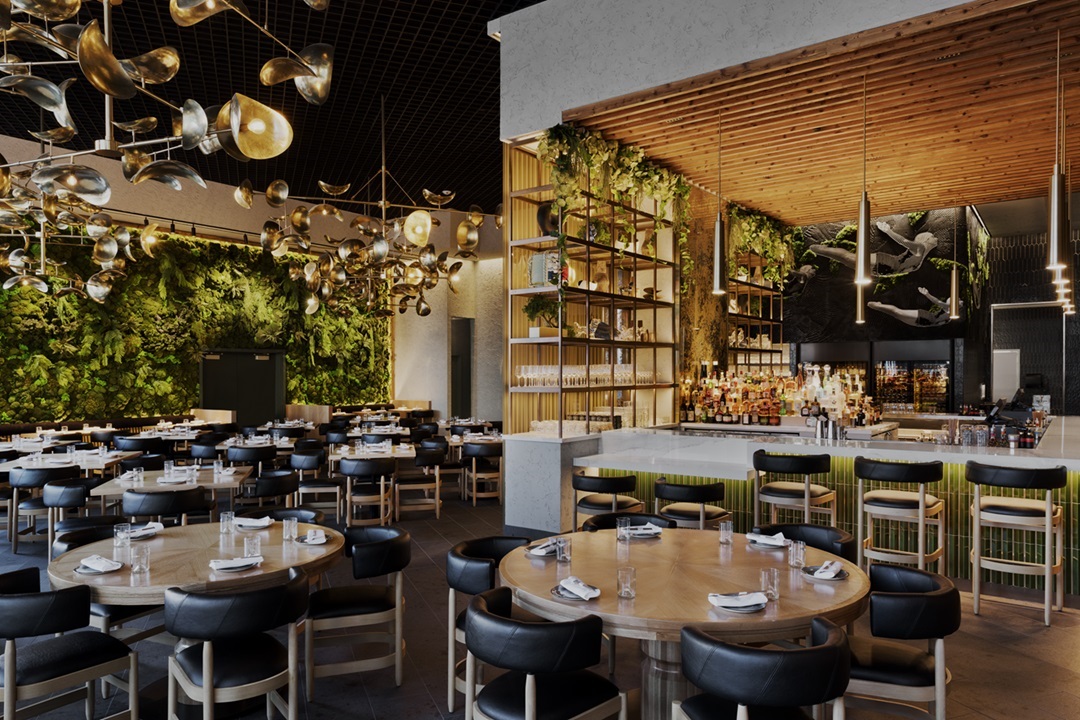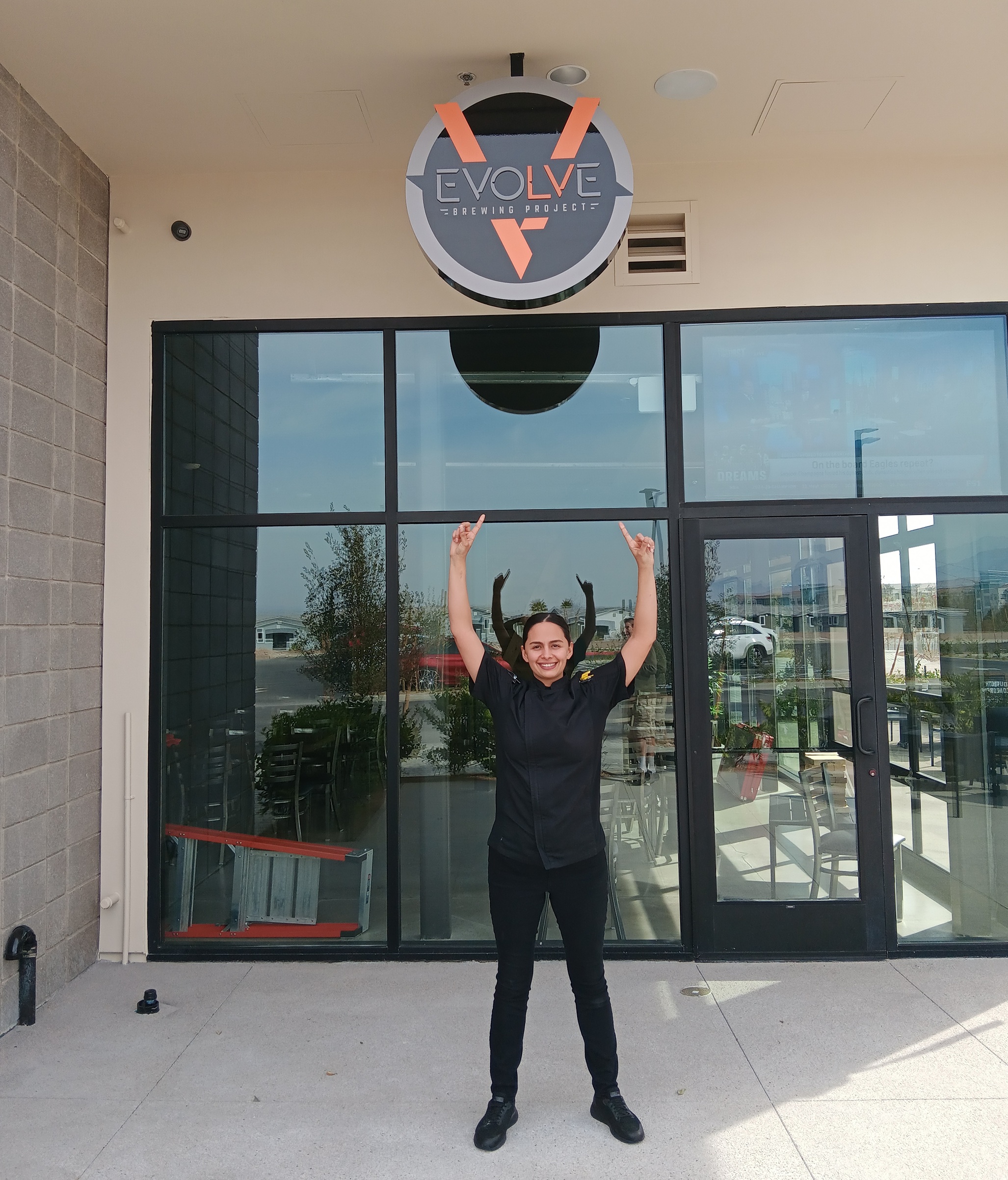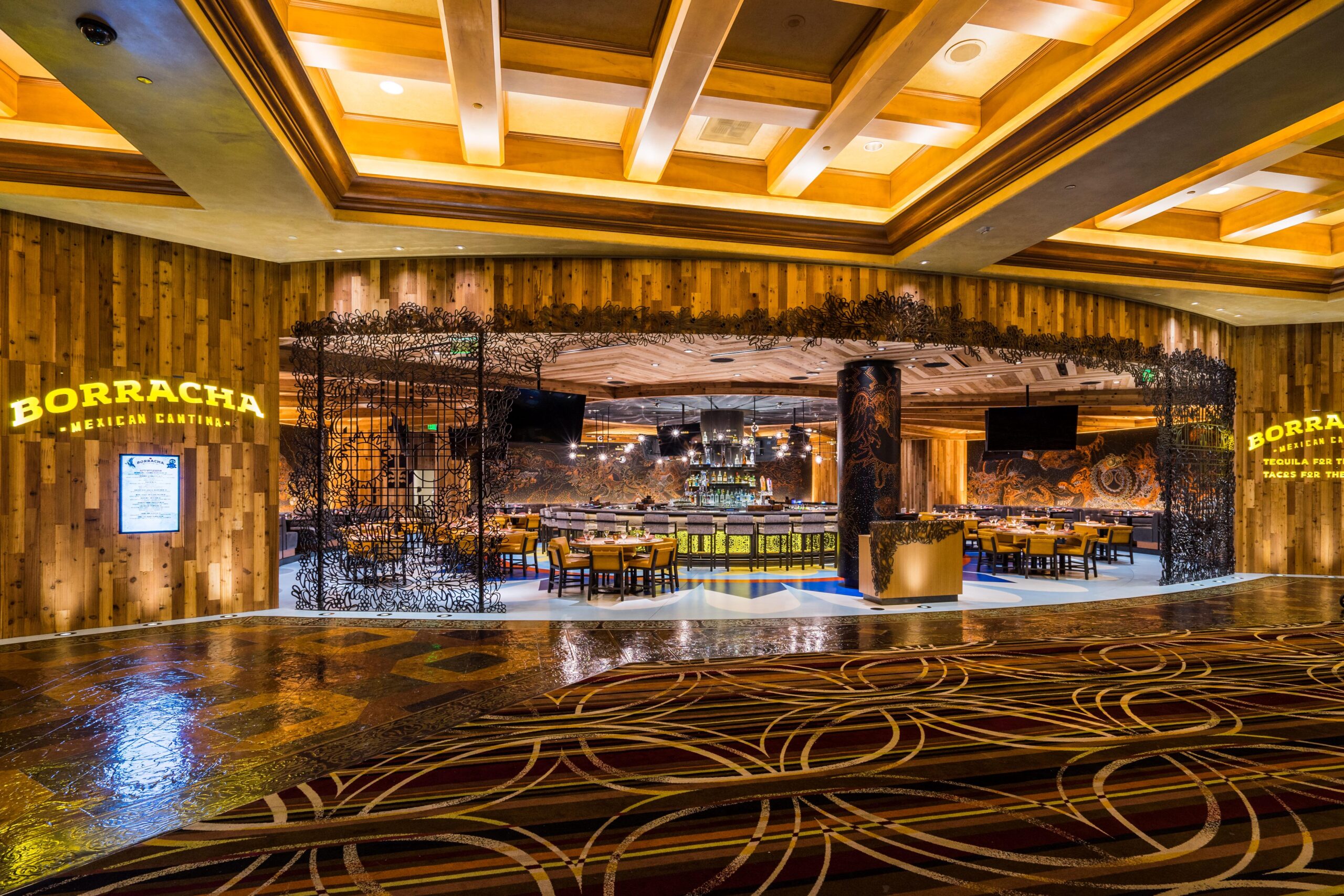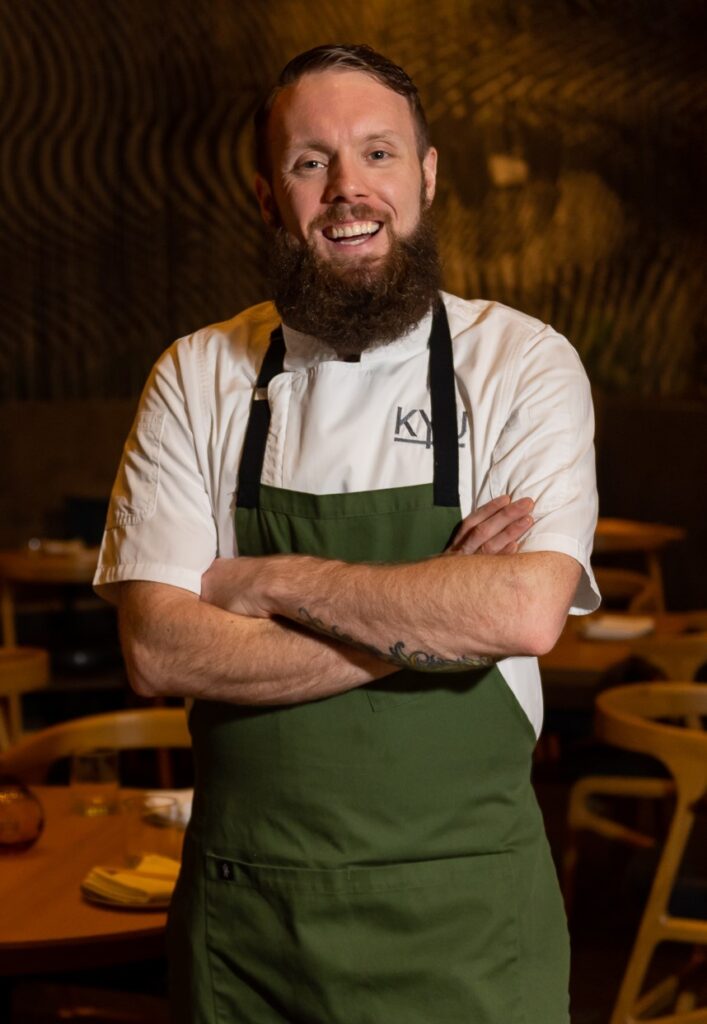
At first glance, it’s difficult to know what to expect from Kyu, which occupies a prime piece of real estate on the ground floor of the Fontainebleau resort.
The sleek modern décor is warm, inviting and peaceful, thanks to natural surfaces like wood and stone throughout and living green touches supplied by plant walls and entangled ivy tendrils draped from the bar. Yet the large open windows that bathe it in natural light also infuse it with the energy of the Las Vegas Strip outside. The menu spotlights the techniques and staple dishes of various Asian and Pacific-rim cultures, including Laotian, Thai, Korean, Japanese and Cambodian. Yet its focus is barbecue, with an uncharacteristic commitment to plant-based options.
A Box In Itself
For an explanation and perhaps the chance to pigeonhole Kyu (pronounced “cue”) into one of the neat Las Vegas dining boxes that dominate The Strip, I turned to the company’s equally complex corporate executive chef.
Christopher Arellanes, who oversees Kyu’s locations in New York, Miami, Mexico City and Las Vegas, learned to cook in a Buddhist monastery before his career took him to some of the world’s most exalted kitchens, including those of NYC’s Eleven Madison Park and Per Se. He makes it quite clear that Kyu is not to be pigeonholed.
“Kyu is a box in itself,” Arellanas declared, during on the April 12 episode of the Food and Loathing podcast.
Asian Fusion Barbecue
“We are American barbecue with Asian influences,” Arellanes continues.
“That’s a very broad statement. But if you were going to put a pin in it, it would be Asian Fusion Barbecue.”
It’s a definition that goes beyond the American barbecue tradition of low-and-slow, although that’s exactly how they smoke their short ribs for 8 to 10 hours. It also includes quickly flash-smoking duck before finishing it on the grill or marking and searing a tomahawk steak on the grill before finishing it in the smoker.
“We use the smoker as an oven, which adds depth and adds flavors,” Arellanes explains.
The chef concedes that the Asian touches are not always 100% true-to-tradition, as he harnesses them to enhance the restaurant’s identity as a barbecue restaurant, not define it. Because, he notes, not all of the cultures represented have fire-cooking traditions on par with those of the U.S.
“When you get into, like, French Polynesian or you get into the Cambodian influence, there are certain areas that have open-fire cooking. You can really find that in areas around the world, [and] we do try to embody that. In Thailand, they have a lot of pit fire cooking, as well as in different parts of Europe.
“But we don’t just sit here and say ‘Oh, in Laos they have this fish that they only cook in banana leaves underground in a fire in a pit.’ … We utilize the equipment that we have. We utilize the techniques that we know. And then we pull influence from those other regions.”
Inclusive Menu
The chef and his team also pride themselves on catering to those with dietary restrictions and allergies. So you’ll find plenty of gluten-free, pescatarian and vegan options. In fact, the signature roasted cauliflower has become so popular at their other restaurants that they decided to donate 1% of its proceeds to environmental non-profits.
According to Arellanes, other signature items include tuna crispy rice, smoked short rib, and fried chicken.
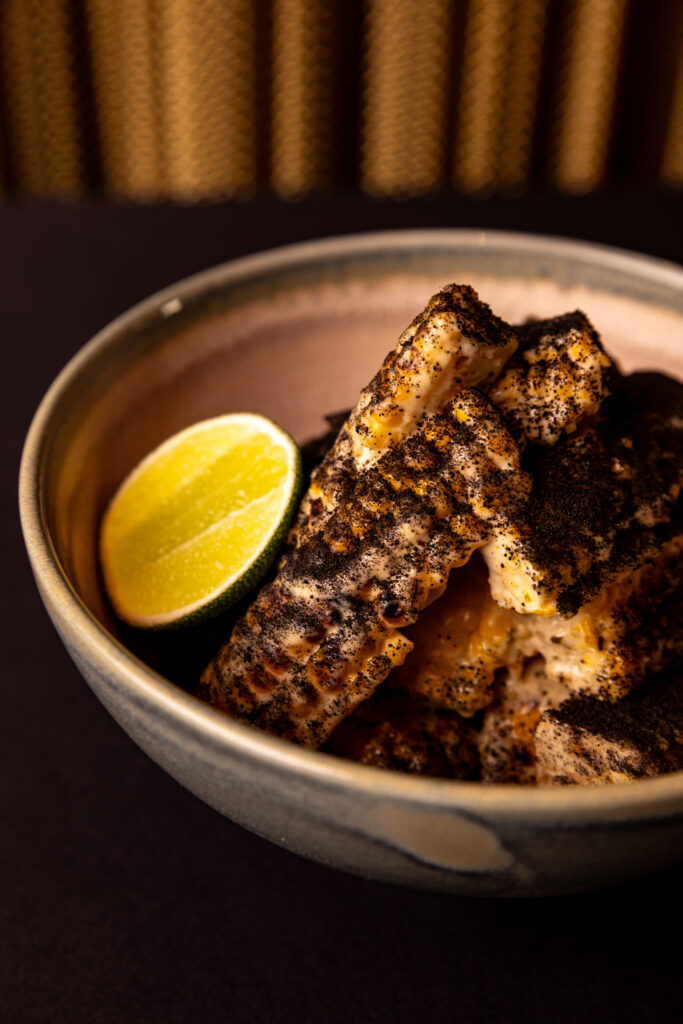
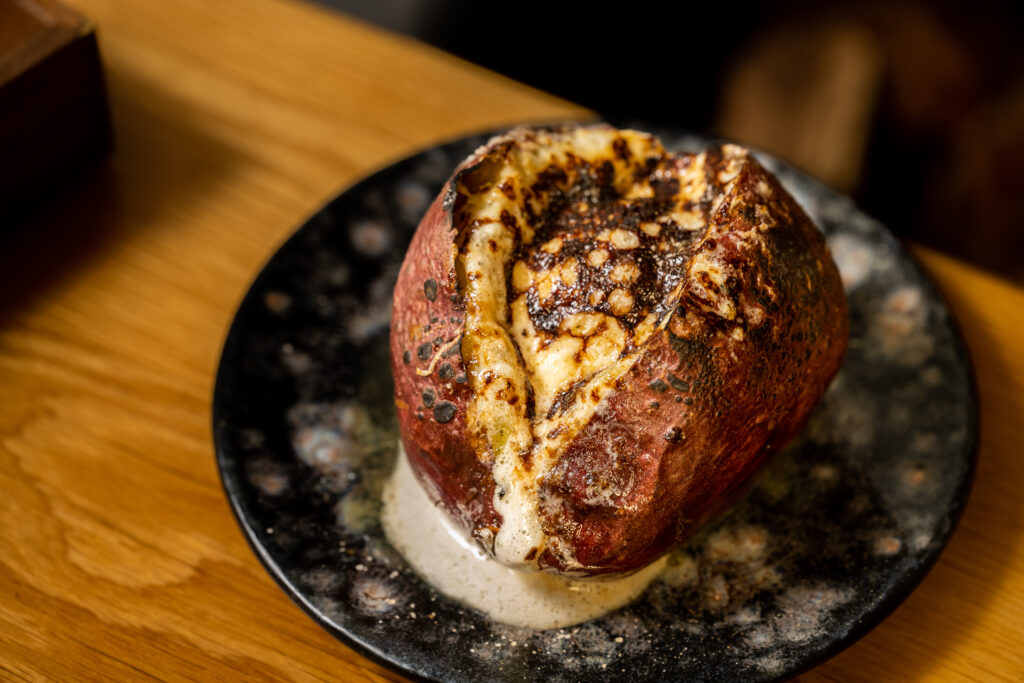
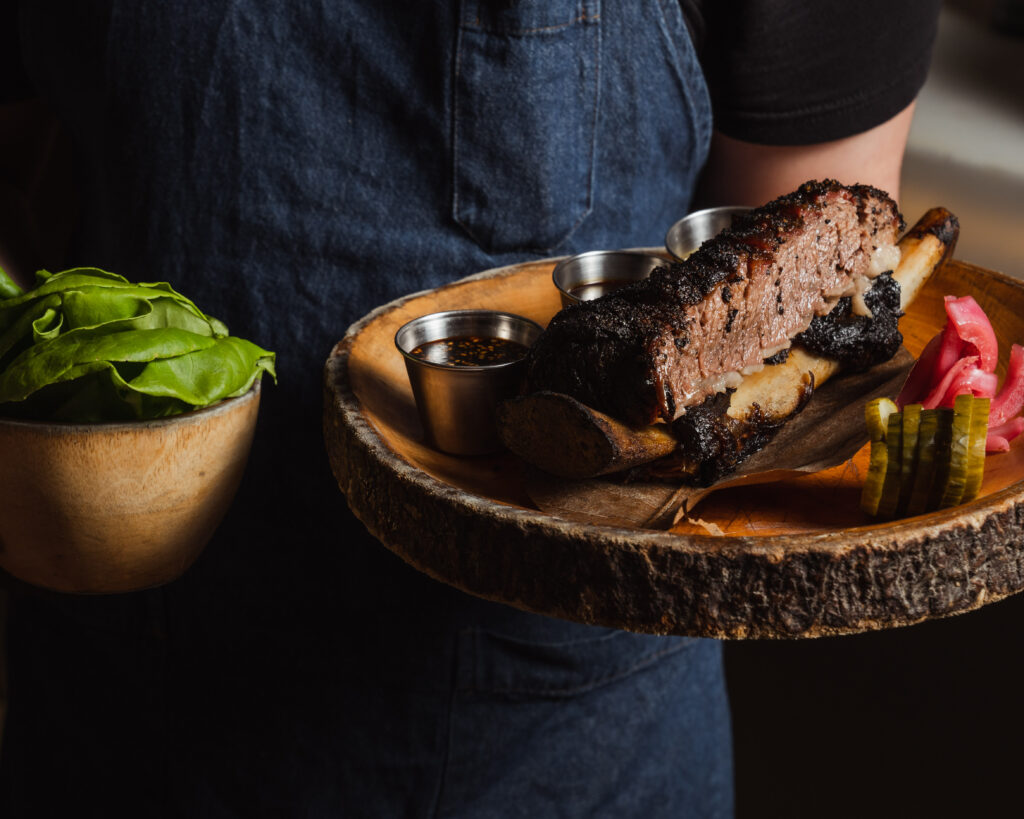
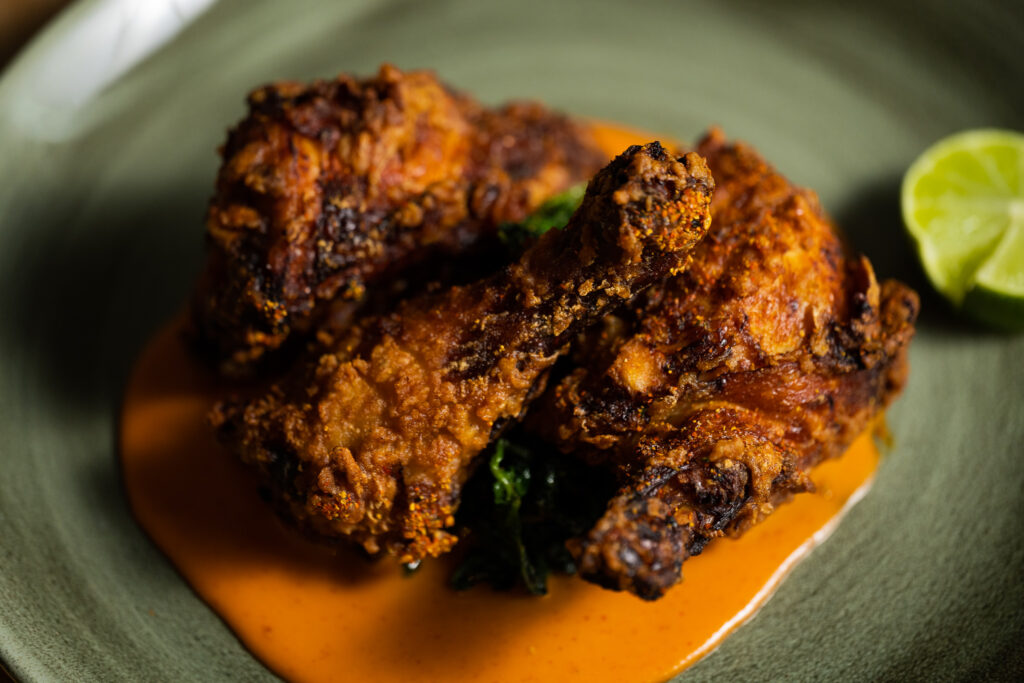
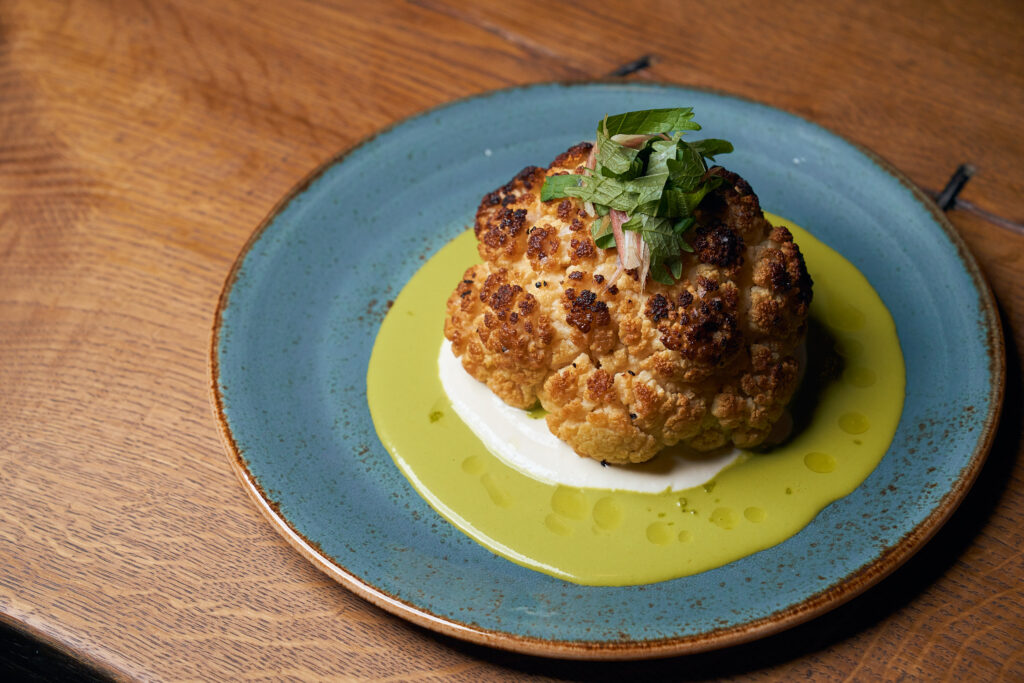
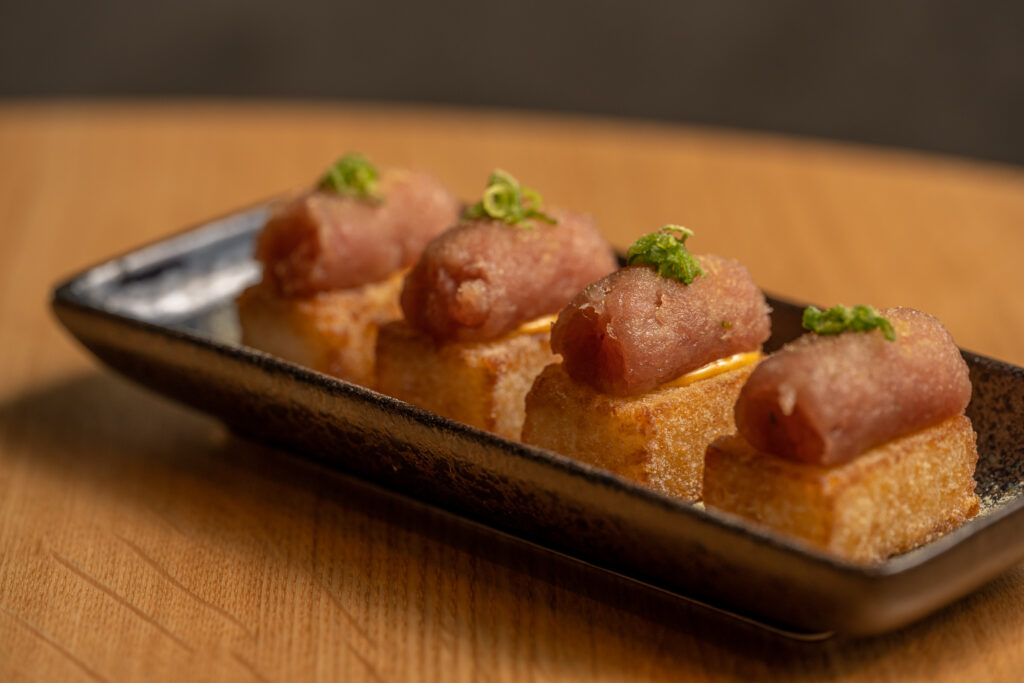
“Our Korean fried chicken [is] very approachable in the sense of the style: a butter chili sauce with the fried chicken. But there’s a lot of technique that goes behind it — the brining, the crust, the sauce.”
Other notable dishes include bulgogi grilled octopus, pork belly pastrami served with bao buns and miso mustard, and wagyu tartare infused tableside with torched bone marrow. The chef’s underlying philosophy connects them all.
“I try to bridge the gap of more traditional mom-and-pop style cooking into my fine-dining world,” says Arrelanes. “And then the trifecta of that [also incorporates] what Kyu is about. And that’s that a barbecue, family-style, community-driven concept.”







